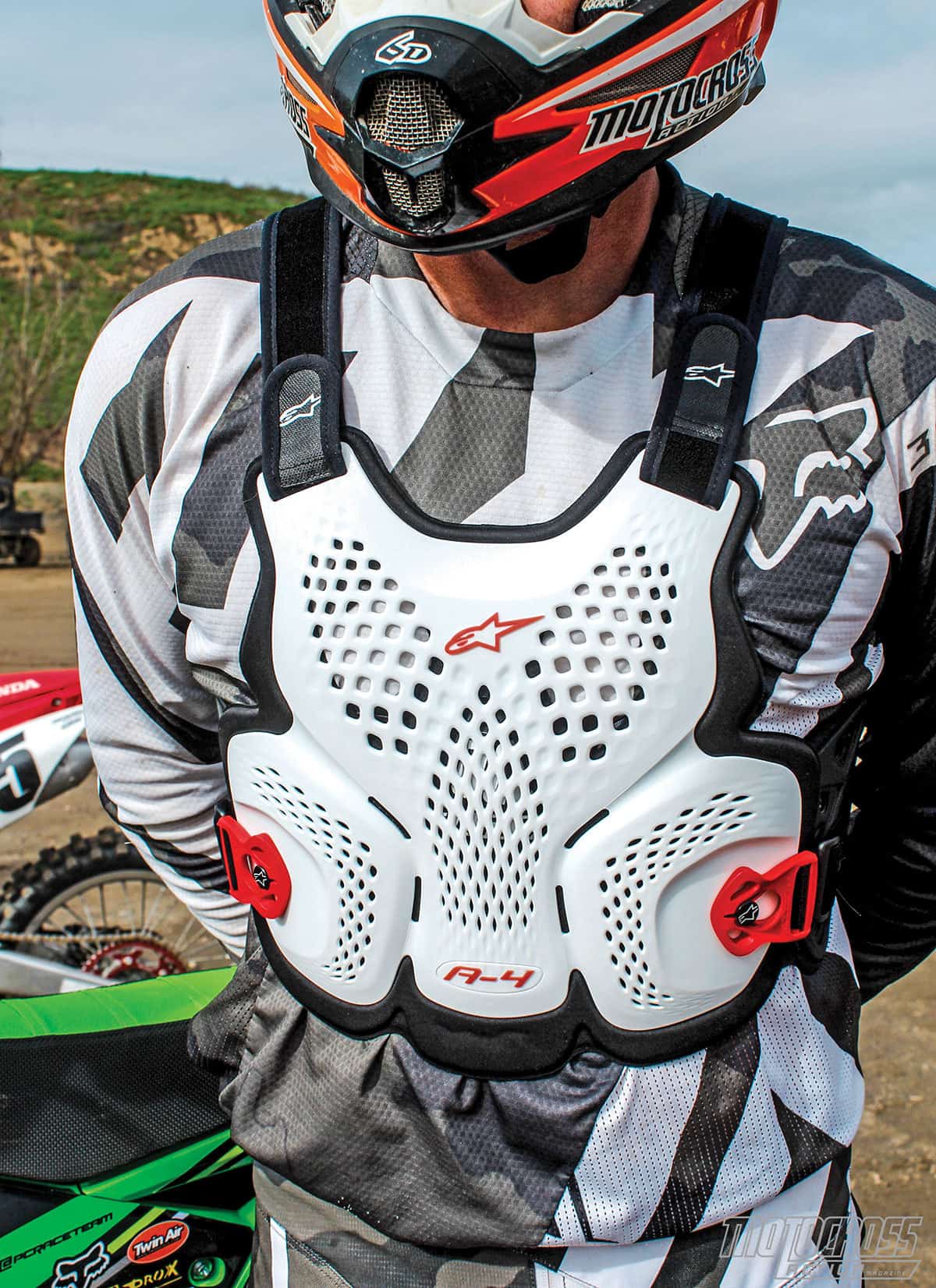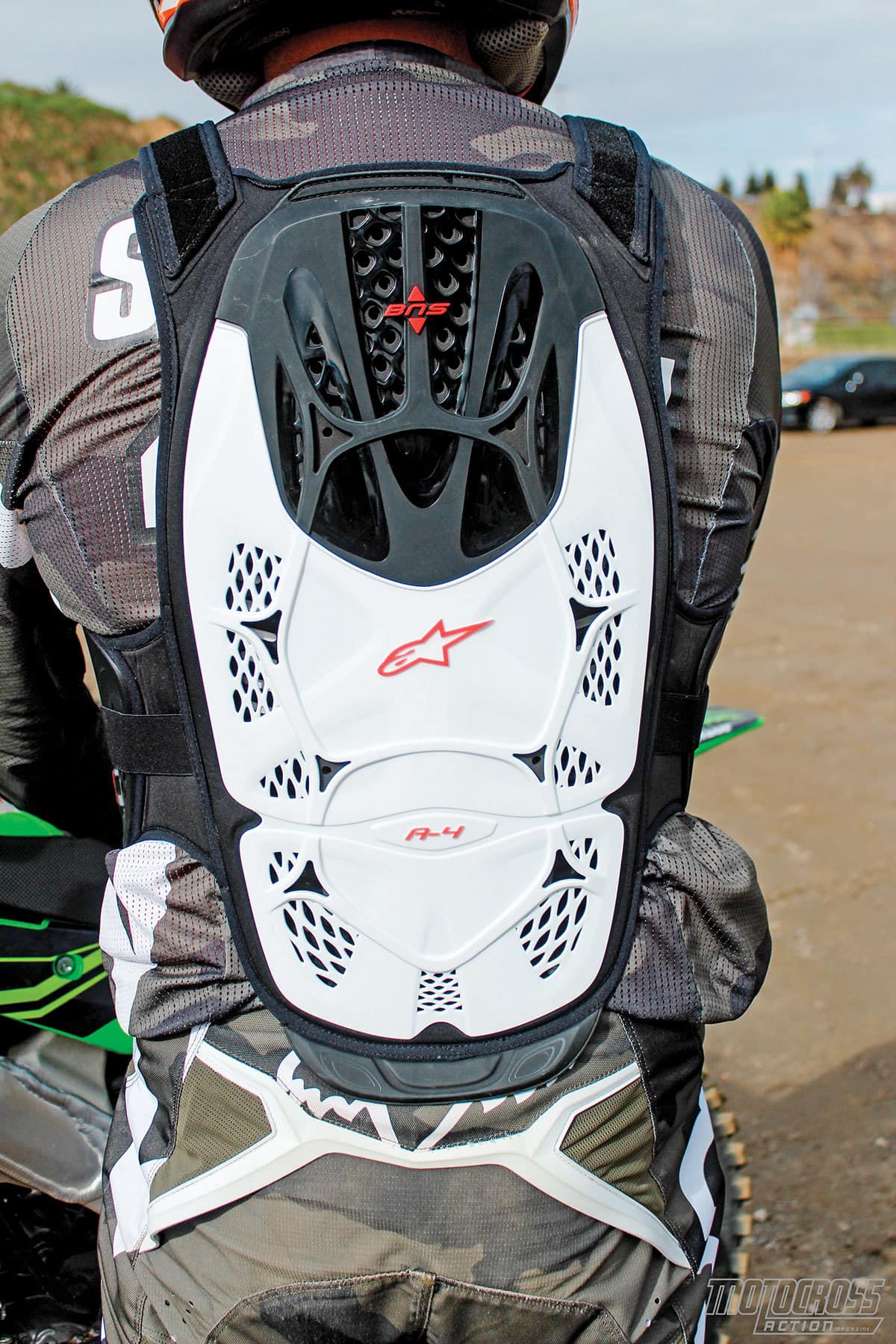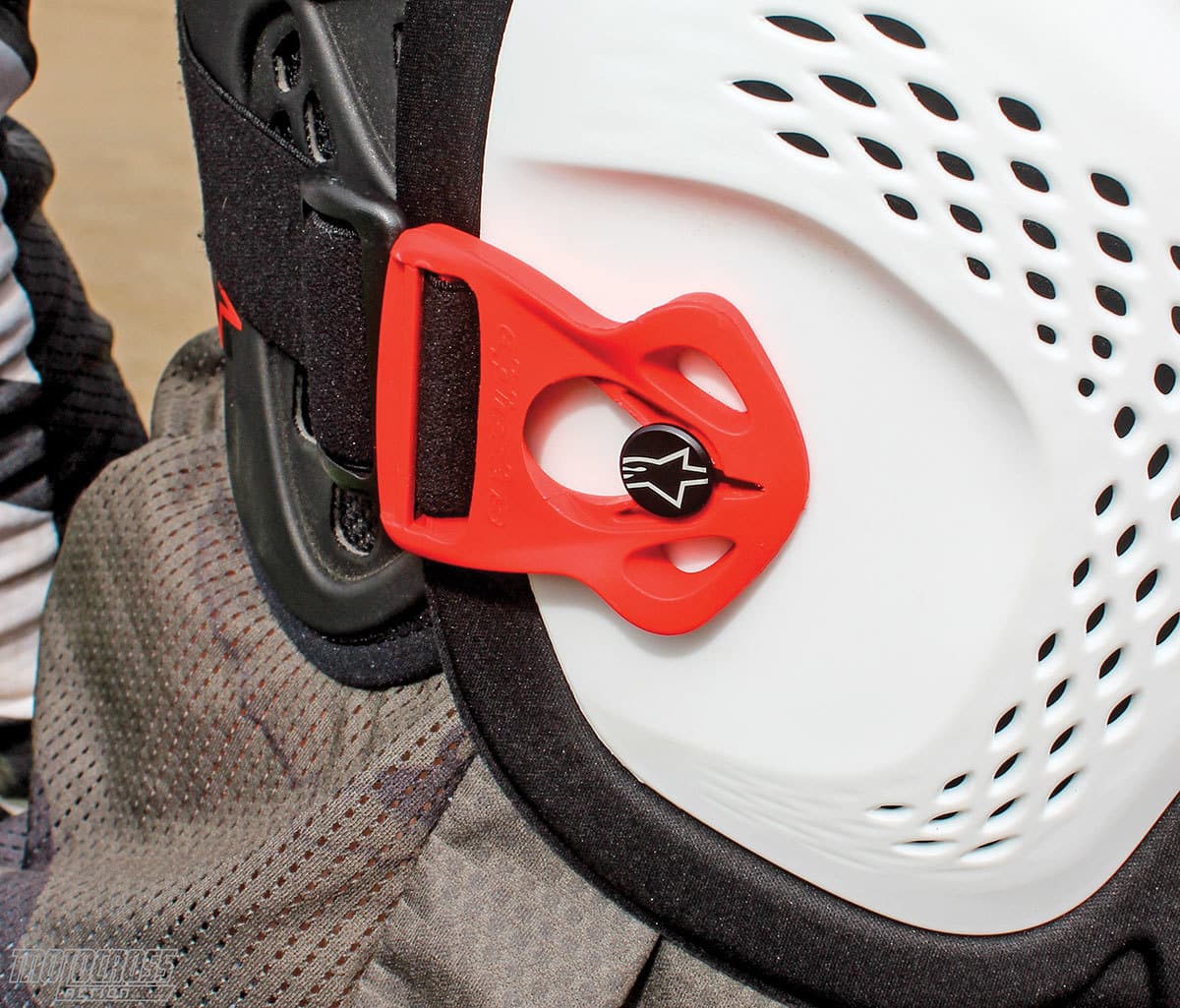MXA TEAM TESTED: ALPINESTARS A4 ROOST GUARD

WHAT IS IT? Alpinestars makes two new roost guards for the U.S. market. The A1 is a lightweight over- or under-the-jersey guard, while the A4 utilizes some of the A1 parts but has a longer and more protective back panel. MXA tested Alpinestars’ A1 roost guard in the September 2016 issue and said, “Of all of the roost guards we have tested, the Alpinestars A1 is the thinnest and least obtrusive front-and-back chest protector made.” This month, we turn our attention to the Alpinestars A4 roost guard.
WHAT’S IT COST? $179.95 (A4 roost guard), $119.95 (A1 roost guard).
CONTACT? (800) 409-0903 or www.alpinestars.com.
WHAT STANDS OUT? Here’s a list of things that stand out with the Alpinestars A4 roost guard.
(1) Protection. The A4 shares the A1’s front panel but has a substantially stouter back panel. The A4’s spine protection is a step above the A1’s thanks to more surface area, added kidney protection and three layers of energy-absorbing pads placed between the plastic and the liner. The A4’s back panel is CE certified at the EN-1621-2 level, while the front is EN-14021 rated. The lighter A1’s front and back are both EN-14021 certified. The EN-14021 certification means that it is classified as a “stone shield.” Its transmitted force cannot exceed 27 kilonewtons of impact force (approximately 6000 pounds-force). The more stringent EN-1621-2 of the A4’s back panel is the highest level of back protection available. Its transmitted force cannot exceed 12 kilonewtons of impact force (approximately 2500 pounds-force). Obviously, the less force the protector transmits to the body, the softer the blow.

(2) Fitment. The Alpinestars A4 is available in three sizes: XS/S, M/L and XL/2XL. If you weigh over 200 pounds, you will find yourself between sizes, not because the elastic strap won’t stretch far enough, but because the kidney panels have a fixed length and they determine maximum girth. Once you have the correct size, adjustment is simple. Place the A4 over your head. Attach the kidney panels to the Velcro tabs on the front panel, and then pull the elastic straps around your waist and hook them on the pins. Height adjustment of the front and rear panels is achieved by moving two Velcro shoulder straps up and down.
(3) Added features. The Alpinestars roost guard has a removable upper section in the back panel that makes room for neck braces. There are also elastic hooks and small shoulder pads to cushion where the neck brace sits. These features are designed to work with Alpinestars’ proprietary BNS neck brace.
WHAT’S THE SQUAWK? We had four minor quibbles: (1) Choosing the correct size can be problematic in the 190-pound to 200-pound range. If you get too small a size, the kidney panels will come un-Velcroed and flap around. (2) The orange hooks have a very tight tolerance fit to the attachment pins. The more you use them, the better they fit. (3) The pins that the elastic straps attach to fell out of our A4, but luckily they landed on the ground in front of us and we were able to reinstall (and tighten) them. (4) If you wear a kidney belt in your pants, the long tail of the A4, which is 5 inches longer than the A1’s tail, can get caught inside the belt.

MXA RATING: The Alpinestars A1 and A4 roost guards are two peas in a pod. If you are looking for increased protection, the A4’s larger back panel, higher CE impact rating and side kidney pads fit the bill.
Click on images to enlarge





Comments are closed.